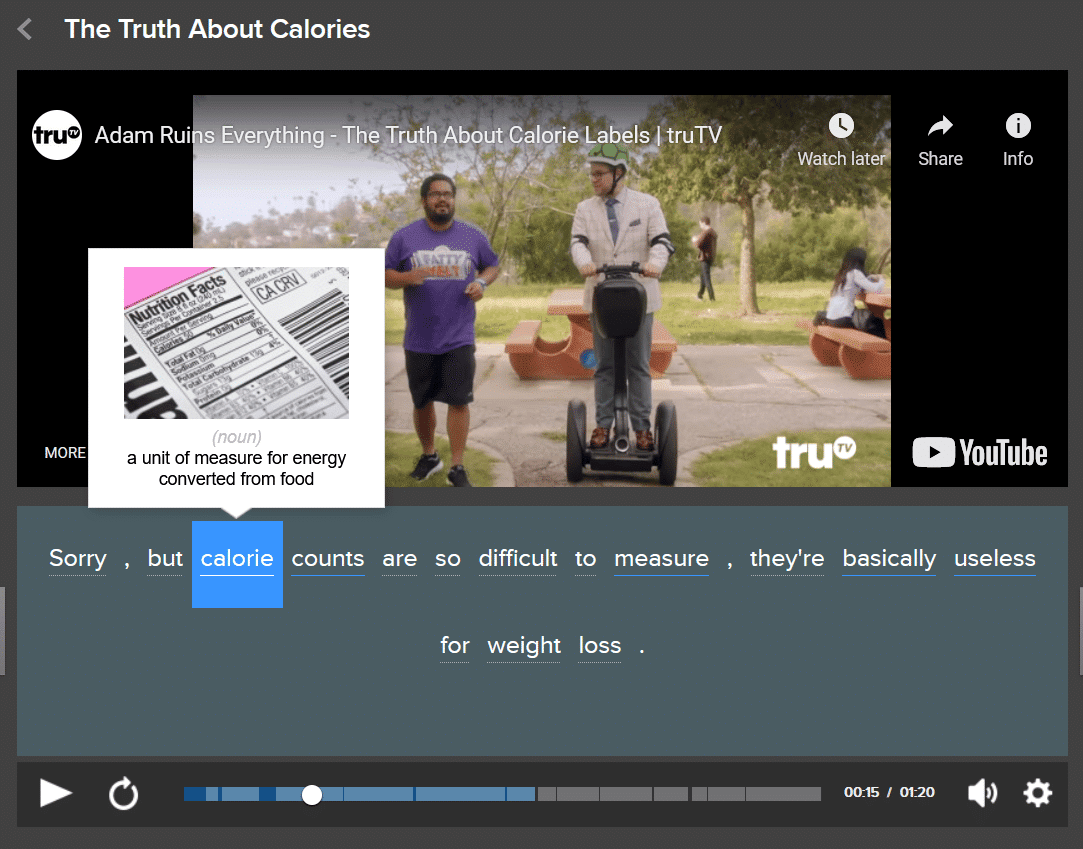5 Intonation Activities for Teaching English

The ability to communicate and the ability to be understood are the most important parts of learning a new language. Students don’t just need to learn what to say, they also need to learn how to say it. But sometimes it can be difficult to teach a topic like intonation, which can be very subtle and which just comes naturally to native speakers.
The activities in this post are designed to help you teach English intonation in an accessible and engaging way. No matter what level you’re teaching, these intonation activities are a gateway to more fluent-sounding speech among your students.
Download: This blog post is available as a convenient and portable PDF that you can take anywhere. Click here to get a copy. (Download)
1. Video Warm-ups
Regardless of whether you’re teaching intonation for the first time or you’re simply reviewing material you covered last week, it’s always a good idea to introduce a short warm-up that gets students thinking about the material.
The videos below don’t just teach intonation in an engaging way, but they also have interactive elements that make them great for classroom warm-up activities.
Rachel’s English
If you’re looking for a way to introduce intonation to your students, have a look at this YouTube channel. You can browse a number of different video clips covering intonation and pronunciation.
For classroom activities, have students follow along with Rachel’s playlist of intonation videos, imitating her examples. Rachel also has mouth exercises that’ll help them learn how to relax their tongues so that they don’t become tired from speaking English.
FluentU
One of the best ways to teach correct English intonation is to show students authentic English speech in a variety of situations. FluentU is an immersion platform that helps you do that while also actively building students’ language skills.
The program has a variety of videos that students of all ages will find engaging, from movie trailers and vlogs to news segments and inspirational talks. FluentU videos are equipped with learning tools like transcripts and subtitles, tailor-made quizzes, contextual definitions and a robust SRS-based flashcard review system.
Videos can be paused at any point by hovering the mouse over a word for a quick review of its definition. Clicking on the word will let students hear its pronunciation on its own, in example sentences and even in clips from other videos. There’s also the option to replay each sentence in isolation to really help students get its sound right.
Jill Diamond
This channel is great because it has many different intonation activities that help students learn how to listen for changes in pitch and speak in high and low pitches.
Most of Jill’s videos can involve participation from students, whether it’s saying sentences in a “sing-songy” manner or repeating various high and low-pitched sounds.
2. Stress Shifting
As we saw with the sample sentence “she didn’t steal my wallet,” it’s possible to change the meaning of a sentence by putting stress on a specific word. Stress Shifting is a simple activity for introducing this concept to your class.
First, you’ll need to collect a list of sample English sentences that your students will read aloud for intonation practice. “Perfect Phrases for ESL Conversation Skills” is a popular English phrasebook that you can use to pull sample sentences from. You could also use this list of 76 important English travel phrases as a jumping off point.
Once in class, write one of the sentences on the board and underline a word to stress. Have a student volunteer read the sentence. Then, erase the underline and move it to another word. Have a different student read the sentence.
Discuss how the intonation shifted, and how the meaning of the sentence changed accordingly. Rinse and repeat with the other sentences in your list.
If you have access to a language lab or recording devices, you can have your students record themselves saying each sentence with different words stressed. This creates a great opportunity for you to assess every student’s intonation, and ensures that even your shyest students get in on the activity.
3. Inside Out
This exercise is a fun and effective way for students to practice English intonation. It will help students learn how intonation can be used to express emotions, feelings and attitudes in English.
For this activity, assign each student a specific emotion or feeling (such as “excitement,” “fear,” “sadness,” “confusion” and so on, just like in the popular kids’ movie “Inside Out”) and have them communicate using the emphasis and pitch that reflects their feeling.
For beginner classes, you might want to create the sentences (or pull from the resources mentioned above) beforehand in order to save class time. But for your intermediate and advanced classes, feel free to have them come up with their own sentences that coincide with their assigned emotion.
4. Who Do You Think You’re Talkin’ To?
The way you speak to your boss is probably not the same way you’d speak to an annoying younger brother or sister. We speak differently to people depending on who they are and how we feel about them.
This is incredibly important for ESL students to know when learning English, so they don’t go through life speaking sarcastically to everyone they encounter. This activity helps them get used to adjusting their intonation depending on their audience.
Put students in pairs and have them read sample sentences to each other. But when they read each sentence, change the dynamic by having them pretend they’re speaking to a stranger, a close friend, a parent, someone they don’t like and so on.
Listen as you walk around the class and pause, correct or discuss with students where necessary. At the end, gather students for a group discussion about the ways they modified their pitch and word stress depending on their audience.
5. Intonation Improv
This ESL roleplaying activity builds on the last one, with an opportunity for more advanced students to get extra English communication practice. It’s also a nice way to help your more creative students shine.
Put your students in groups of two or three and give them a number of different scenarios, such as:
- Meeting a friend for the first time in years
- A couple breaking up
- Arguing with a stranger
- A doctor and a very sick patient
Every scenario has a different type of emotion that can be expressed through intonation. Reconnecting with a friend should have an intonation that demonstrates excitement or happiness, while arguing with someone would be sarcastic or angry.
You can let students discuss and prepare in groups and then perform one by one for the class, or simply call up volunteers to improvise together. Depending on your class’ proficiency level, you may want to have some general lines written out that students can build off of.
Keep each role-play brief (just a couple of minutes) so that the focus stays on intonation. Afterwards, students can pose questions or discuss what they heard and how they might’ve changed their own intonation.
Remember that every language has its own rhythm and rules regarding intonation, so don’t assume that your students will automatically understand English intonation the first time you teach it.
But with these intonation activities and a little bit of patience, your students will be able to better express themselves.
Download: This blog post is available as a convenient and portable PDF that you can take anywhere. Click here to get a copy. (Download)
And One More Thing...
If you like learning English through movies and online media, you should also check out FluentU. FluentU lets you learn English from popular talk shows, catchy music videos and funny commercials, as you can see here:
The FluentU app and website makes it really easy to watch English videos. There are captions that are interactive. That means you can tap on any word to see an image, definition, and useful examples.
For example, when you tap on the word "searching," you see this:
Learn all the vocabulary in any video with quizzes. Swipe left or right to see more examples for the word you’re learning.

FluentU helps you learn fast with useful questions and multiple examples. Learn more.
The best part? FluentU remembers the vocabulary that you’re learning. It gives you extra practice with difficult words—and reminds you when it’s time to review what you’ve learned. You have a truly personalized experience.
Start using the FluentU website on your computer or tablet or, better yet, download the FluentU app from the iTunes or Google Play store. Click here to take advantage of our current sale! (Expires at the end of this month.)












